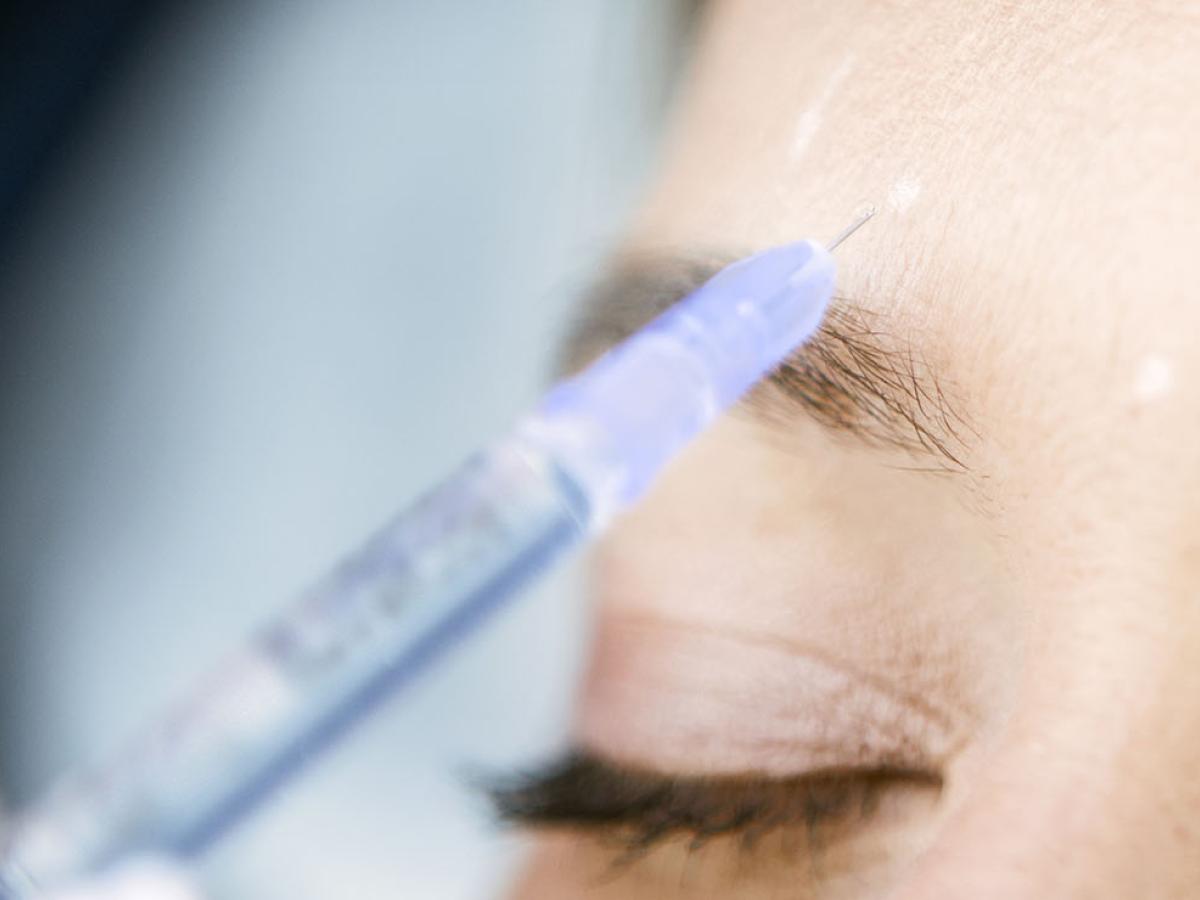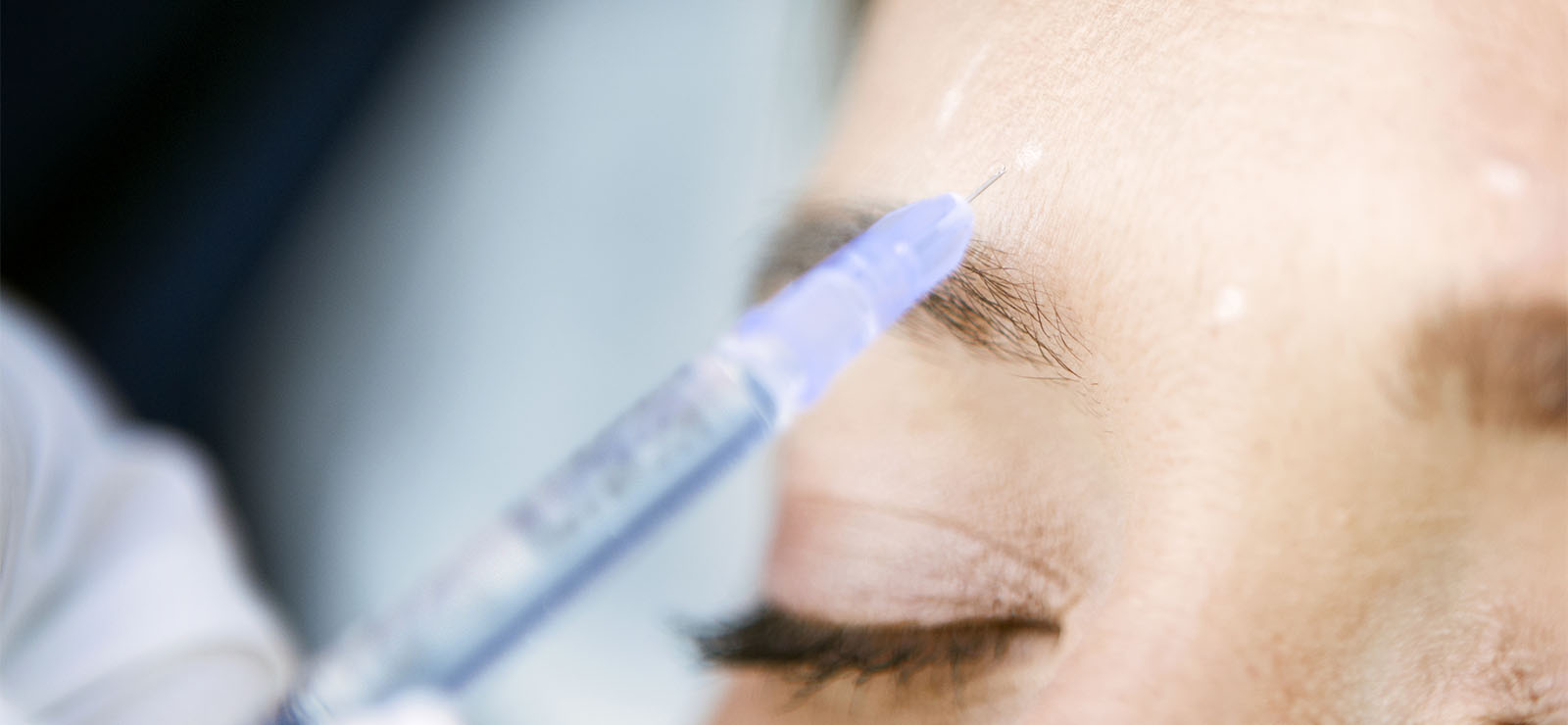April 25, 2024

Between social media selfies and Zoom calls, it’s tough to avoid taking a close, hard look at your face. If what you see is keeping you from going filter-free, you aren’t alone.
More than 23 million cosmetic procedures were performed in 2022 across the United States, and the most common services involved neuromodulator injections like Botox® and dermal fillers. But what’s all the hype about? And how do you know which will work for you?

To learn more, we asked family nurse practitioner Elizabeth Sundvold, who specializes in Botox and dermal fillers at MU Health Care’s Plastic Surgery and Med Spa.
She explained how these procedures can minimize natural signs of aging and shared five significant differences between Botox and dermal fillers:
What Is Botox?
Botox is a nerve-blocking drug (also known as a neuromodulator or neurotoxin) called botulinum toxin that keeps muscles from tightening. “Neurotoxins have been around for a long time,” Sundvold says. “After years of using them to treat eyelid spasms and other eye disorders, experts realized they also reduced wrinkles in that area.”
Injecting Botox into your facial muscles helps them relax, making deep, existing wrinkles less noticeable — and helping prevent new wrinkles. “Botox can correct dynamic lines and will reduce the appearance of wrinkles,” Sundvold says. “That’s because the lines aren’t created repeatedly as your face moves, and the wrinkles that do form don’t get as deep.”
Botox is just one brand of botulinum toxin, though it’s common to refer to all botulinum toxin injections as “Botox.” Other common FDA-approved brands are Dysport®, Xeomin® and Jeuveau®.
What Are Dermal Fillers?
Dermal fillers — also called soft tissue fillers, facial fillers or injectable implants — are gel-like substances injected under the skin to “plump” the area and provide a fuller appearance. In most cases, your body breaks down and absorbs the filler over time. FDA-approved biodegradable filler materials include:
- Hyaluronic acid, a sugar found in the body
- Calcium hydroxyapatite, a bone mineral
- Poly-L-lactic acid (PLLA), a synthetic material
“Fillers are not injected into muscles, but in the space above or below muscles,” Sundvold says. “They reduce the appearance of lines by adding more volume under the skin.”
Botox vs. Fillers
If you are considering a cosmetic procedure like Botox or fillers, the first step is having a licensed health care professional perform a consultation and assessment. But before you jump in, it can be helpful to understand the major differences between these popular cosmetic services:
1. How Health Care Professionals Use Botox and Fillers
Both Botox and fillers help prevent or reduce signs of aging. But they differ in how they get the job done:
- Botox helps eliminate and prevent dynamic wrinkles resulting from common facial movements, such as smiling or raising your eyebrows. Most dynamic wrinkles happen in the top half of your face — Botox is commonly used to treat forehead wrinkles, crow’s feet (sides of your eyes) and glabella lines (located between the eyebrows and sometimes called “frown lines” or “elevens”). But Botox can also treat the upper lip area, jaw and corners of the mouth. Using smaller doses of Botox (“baby Botox”) at a younger age may delay dynamic wrinkle formation.
- Dermal fillers treat static wrinkles or scars that are always visible — even when you aren’t moving your face. Static wrinkles tend to show up as gravity takes over and your skin naturally loses elasticity. Lines commonly emerge vertically on either side of the chin (marionette lines) or around the mouth (lip lines). Fillers can also be used to replenish the volume we naturally lose in our midface as we age. They can be used to add contour to the cheeks or structure and facial balancing in the chin and jawline. Some people also receive fillers in their hands to reduce visible aging signs there.
Botox and fillers aren’t only used for aging-related concerns. Fillers can change facial features, making lips fuller or creating more defined cheekbones. Botox also helps with medical conditions, including:
- Excessive underarm sweating
- Jaw disorders
- Migraine headaches
- Overactive bladder
2. Treatment and Recovery Time for Botox and Fillers
Botox and fillers don’t involve lengthy procedures or recoveries. But getting Botox is quicker than getting fillers, often taking 10 minutes or less.
“They call Botox a lunchtime procedure because it’s quick enough to do it on a lunch break,” Sundvold says. “You can return to work, and people won’t know you got anything done. You may have a few bumps at the injection site, but they usually go away within 10 minutes.”
Filler takes a bit longer because the procedure is more involved. The area receiving filler needs to be numbed, which can take up to 20 minutes. Then, the procedure itself can take up to 40 minutes. You may experience some minor bruising and swelling lasting anywhere from a few days to weeks.
3. When You’ll See Results and How Long They’ll Last
Botox results are not immediate — you might not see the full effects for three to 10 days. And those results don’t last forever. For most people, the effects wear off after three to four months.
“Your neurotoxin dose determines how long the results last,” Sundvold says. “If you get a higher dosage, you might have less movement in that area of the face, but it may also last longer.”
The effects of dermal fillers happen immediately and last a lot longer than Botox — up to two years for some cheek filler and one year for most other areas. And unlike Botox, many fillers are removable if you don’t like the results or have an adverse reaction.
“We only use hyaluronic acid-based fillers,” Sundvold says. “That way, we can inject an enzyme to dissolve the filler if it produces an undesired result.”
4. Possible Side Effects of Botox and Fillers
Though it might seem like everyone is doing it and getting great results, Botox and fillers are not without risk. Going to a licensed health care provider and following their post-injection instructions can greatly minimize those risks.
Research shows that 16% of people receiving botulinum toxin injections in the upper part of the face had side effects. The most common complications reported include:
- Headache or migraine (6.3%)
- Bruising or swelling at the injection site (3.8%)
- Neuromuscular effects such as ptosis — droopy eyelid or brows (3.3%)
Dermal fillers may cause swelling and bruising. A more serious risk is that dermal filler can be accidentally injected into a blood vessel. When that happens, the filler can block blood flow (vascular occlusion), reducing how much blood reaches nearby areas of the body.
Vascular occlusion after fillers is rare, but it’s more likely if the injector isn’t qualified or adequately trained. “Areas of the face such as the eyes and nose are ‘red flag’ zones for fillers because they carry increased risk,” Sundvold says. “When injecting in these areas, it’s extremely important to have someone who understands the anatomy of the face and where important structures are located. I’m constantly reviewing books and articles on anatomy and safe techniques, as well as working closely with plastic surgery and taking call in the hospital to keep me fresh.”
5. Cost of Botox and Fillers
The costs of cosmetic procedures like Botox and dermal fillers vary because each person’s needs (and wants) differ.
“What you have done may depend on your age, sun damage, how you sleep, and most importantly, what’s bothering you and how aggressive you want to be with treatment,” Sundvold says.
Botox injections are priced per unit, with each unit costing approximately $10 to $15. To give you an idea of how that might add up, the average forehead and eye area requires 25 to 50 units. According to the American Society of Plastic Surgeons, the average cost per session of botulinum toxin injections is $528.
Dermal fillers are more expensive than Botox injections but last much longer. The average cost of hyaluronic acid fillers is $682 per syringe, with most people requiring more than one syringe per session. The average treatment with hyaluronic acid fillers costs $794.
Insurance doesn’t typically cover the cost of Botox or fillers for cosmetic purposes. But the service may be covered if you are using them to treat a medical condition.
Where to Get Botox and Fillers
You can get cosmetic injections, especially Botox, in a variety of settings — as long as a licensed physician, nurse practitioner, registered nurse or dentist administers the injections. While a Botox party featuring a licensed professional may be enticing, it’s recommended you choose a qualified practitioner with the appropriate training and aesthetic experience to not only provide a clean and safe experience, but to also have the knowledge and resources to handle any complications.
“I recommend you do Botox and fillers in a medical office setting,” Sundvold says. “It’s sanitary, you’re working with an expert and your care will be documented. If there are issues, medical professionals can see what’s been done and treat it appropriately.”
Next Steps and Useful Resources
- Want to discuss if Botox or filler is right for you? Speak with a specialist.


